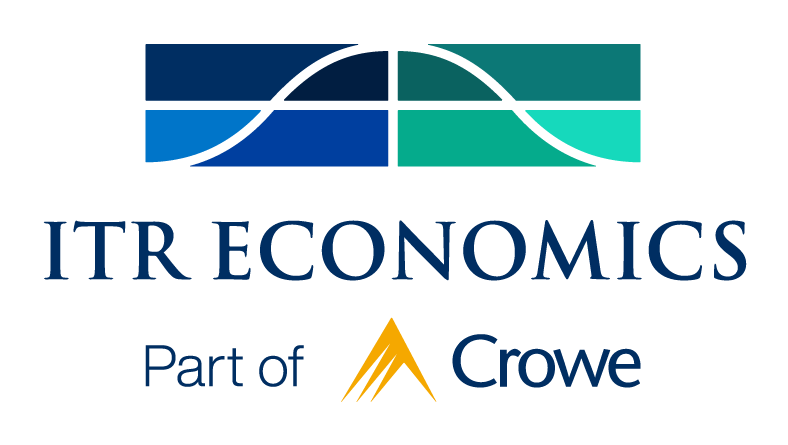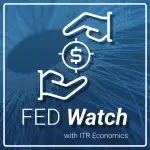February 10, 2025
- Home
- portfolio
- TrendsTalk
- February 10, 2025
GLOBAL SUPPLY CHAIN ANALYSIS AND ACTIONABLE ADVICE
This week on TrendsTalk, ITR Economist Taylor St. Germain discusses the current state and future outlook of global supply chains, offering practical advice for navigating upcoming supply chain challenges. Tune in to learn more!

MEET YOUR HOST
Taylor St. Germain
As an experienced economist, Taylor St. Germain provides consulting services for small businesses, trade associations, and Fortune 500 companies across a spectrum of industries. His dynamic personality and extensive knowledge of economic trends and their business relevance are highly valued by clients and colleagues alike.
“Join me on the TrendsTalk podcast to explore the world of economics. Episodes offer insightful discussion and expert interviews. We cover relevant economic concepts in an accessible way. Whether you are a curious layperson or an industry professional, TrendsTalk is your go-to source for thought-provoking analysis and a deeper understanding of the economic forces shaping our world.”
Key Episode Takeaways
- 0:09 – Forecasting positive US GDP growth over the next five years
- 1:09 – Analysis of global supply chain pressure
- 2:04 – Future supply chain predictions
- 3:29 – Strategic supply chain recommendations
- 5:19 – Learn more about supply chain issues and solutions at the ITR Economics Summit on March 20!
The below transcript is a literal translation of the podcast audio that has been machine generated by Notta.
Taylor St. Germain:
Hi everyone, my name is Taylor St. Germain with ITR Economics and thanks for joining me on another episode of TrendsTalk. We at ITR are your unbiased and apolitical source of economic intelligence and today I wanted to discuss the supply chain.
This is a very important topic as we prepare for all of this economic growth that’s coming our way, not just in the next year, but as we look at the coming second half of this decade. Let me remind you all that at ITR we expect that GDP here in the U.S. grows for the next five years. That growth will come at an accelerating or slower pace depending on which timeframe we’re looking at, but we do not have another recession in our forecast for at least the next five years. And while that’s all good news, there’s challenges that come along with that growth. In the supply chain and being well positioned in the supply chain is going to be very important as we move forward.
Let me highlight a data point for you all. I like to refer to the global supply chain pressure index. This comes from the Federal Reserve in New York and it’s a very interesting index and it really highlights is the supply chain under pressure or is the supply chain loosening up? Now, I’m sure as you can all imagine at the end of 2019, really all the way through 2022, the supply chain was under a lot of pressure. We saw lead times increasing, we saw a lack of availability of materials and it created a lot of supply chain pressure, whether you’re looking at that pandemic as being the driver of it, whether it’s onshoring, reshoring, there were a lot of factors that went into the 2020-2022 disruption of that supply chain.
However, what we saw from the supply chain pressure index is in ’23 and most of ’24, that supply chain pressure index indicated that the supply chain was loosening up. And so the question is, well, as we prepare for this second half of this decade, what does the supply chain look like? Well, with GDP growth expected in ’25 and ’26 from ITR’s perspective, along with growing economies around the world, it’s likely that we do see that supply chain tighten up a bit in the years to come. Again, I’m not suggesting we’re going to see the pandemic level of disruption again, but it’s likely that the supply environment tightens up just from the demand pull of the robustness of global economic growth over the next few years.
So what do we need to do as businesses? Well, we need to have those conversations with suppliers and vendors now. We need to ensure that, yes, some industries are still a little bit slower as activities picking up. By the time we get into the second half of 2025, and certainly in the years to come, we are going to see some more pressure on that supply chain. So it’s a good time now to talk to your suppliers and vendors to ensure that they’re ready for this uptick in activity that’s ultimately going to be coming our way.
The second piece I would add in there, though, is evaluating your supply chain from a geopolitical, from a location standpoint. Now, we’ve all heard the China plus one mantra over the past few years, which is having an additional supplier outside of China. I would challenge everyone to take the China plus one plus one approach. I would add a second supplier in there to ensure that you’re diversified. It’s clear that the administration, the Trump administration that recently took office is taking a very hard stance against China. Not to mention, China has some trends that worry us as economists as we look at China’s growth out there into the future. So with protectionism, with the declining population in China and a host of issues, especially from a government debt standpoint, we really need to take the time to make sure our supply chains are diversified so that we can keep up with this growth over the next five years.
Again, a lot of the questions in ’24 were, well, when’s this growth going to come back? I can assure you that as we get into the second half of the decade, the question’s going to change from where’s the growth to how do we keep up with this growth? And that supply chain is a key part of that. So I would urge you to look to other suppliers and continue to diversify your supply chain, not just because of protectionism, but because of some of the trends in places like China that are worrying to us as we look forward.
And we’ll talk about China more on future trends talks, but now is a great time in the cycle before we find ourselves very busy over the next few years to be evaluating that supply chain.
I’d also like to highlight that on March 20th, we’re holding a summit between ITR and our Crowe colleagues where I and one of our Crowe colleagues will be covering the supply chain in greater detail on how to be positioned, how to take advantage of technology and ensure your supply chain is ready. for the years to come. So that more information on our website about that March 20th summit, we’ll have a lot of great supply chain insights coming your way. But before things get very busy, let’s take the time now to evaluate that supply chain and make sure we’re prepared for what’s to come.
I hope you found this information helpful. Please like and subscribe to Trends Talk wherever you listen to your podcasts. And I look forward to seeing you all in the next one. Take care for now.






